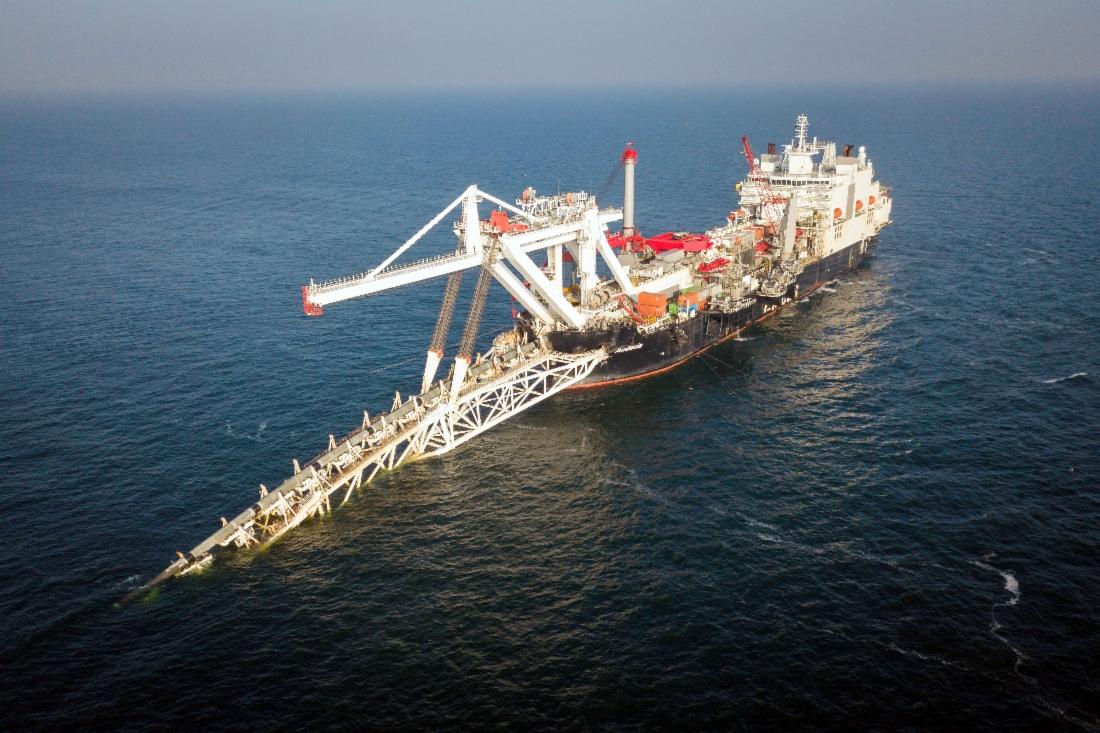
Continued Nord Stream 2 gas pipeline construction could lead to an irreversible environmental impact and will make impossible the use of the water area for fishing and recreational services – that's if the seabed along the pipe route is not cleared of chemical munitions.
The Danish Energy Agency has granted Nord Stream 2 AG permission to build part of the Nord Stream 2 gas pipeline on the country's continental shelf southeast of Bornholm in the Baltic Sea, Da Vinci Analytic Group recalls in its report.
Since 2007, Russia has attempted to adjust the Nord Stream route to circumvent chemical munitions dumping sites east of Bornholm, but these efforts have faced many complications, including due to the lack of data on the exact locations of dumped munitions.
Between 1947 and 1948, the Soviet Union dumped east of the Bornholm Island an arsenal of chemical weapons containing warfare agents, in particular, adamsite, diphenylchloroarsine, and mustard gas.
It has been established that part of the arsenal was dumped in cases while ships carrying them were still on their way to the designated area, and part of the wooden cases were drawn by currents and tide beyond the said area. Cases were reported where people would find munitions cases along the coasts of Bornholm and the southern coast of Sweden. Thus, the exact location of the entire arsenal of chemical weapons disposed of in the Baltic Sea remains unknown. In many instances, fishermen found munitions outside the designated dumping sites.
In October 2005, the Russian state-owned Vesti Segodnia quoted a document that was found in the archive, dating back to the summer of 1948. It states: "Often due to poor visibility and severe storms, shells with chemical warfare agents are being dumped into the sea beyond the designated areas." Russian media also cited the officially confirmed data stating that in 1946, four ships carrying 15,000 tonnes of chemical weapons were sunk to the southeast of Bornholm, and also that 8 tonnes of chemical munitions were dumped east of the island.
There is documented evidence that in 1945, some 69,000 tonnes of artillery shells containing an agent called tabun (nerve gas) and phosgene were dumped by Wehrmacht in the area of the so-called Small Belt near Bornholm.
In addition to the specified period, another dumping was carried out in the area in 1959. After manufacturers started using sarin as a component of chemical weapons, mustard-based munitions were withdrawn from operation. Almost all stocks of such weapons were also dumped into the Baltic, Kara, Okhotsk, and Barents Seas. The locations of dumping sites remain unknown.
These data are also contained in a report drawn up on the national reports of the Special Working Commission on Chemical Weapons Utilization of the Helsinki Commission (HELCOM CHEMU) in 1994. According to its findings at the time, any operations to pull chemical weapons up from the seabed were dangerous and not feasible, so they must not be carried out.
The 2009 Nord Stream Espoo Report: Key Issue Paper Munitions: Conventional and Chemical states that the only way to clear the seabed of chemical munitions is to detonate them. However, the detonation of chemical munitions will lead to a widening of the contamination zone and the rise of toxic substances into the surface layers of the sea, which will contribute to the pollution and affect marine organisms.
Due to the gas pipeline laying there is a high likelihood of damage to the integrity of munitions or their detonation, which will result in large-scale damage to the Baltic Sea. Also, the detonation of munitions is not excluded after the gas pipeline is launched, due to vibration – that's if the pipe has been laid over a dumping site.
Meanwhile, studies have shown that just one or two molecules of mustard gas penetrating the organism is enough to lead to an emergence in three to four generations of pronounced mental and physical deviations from the norm.

